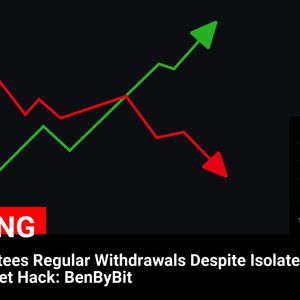Asia-Pacific markets mixed on Tuesday as traders weighed the impact of President Xi Jinping’s pledge to support the private sector during a private meeting with top business figures. Market participants digested the Reserve Bank of Australia's latest policy announcement. Also, investor sentiment remained cautious after US President Donald Trump threatened to impose tariffs on car imports starting on April 2. On the geopolitical front, investors continue to monitor developments of a possible Russia-Ukraine ceasefire agreement. Japan ( NKY:IND ) rose 0.44% surpassing 39,250, while the broader Topix Index added 0.15% to reach 2,770 on Tuesday, extending gains from the previous session as the yen halted its recent rally, easing pressure on domestic equities. The Japanese yen slipped to around 151.8 per dollar on Tuesday, breaking a three-day rally. China ( SHCOMP ) fell 0.20% to fall below 3,350, while the Shenzhen Component lost 0.2% to 10,772 on Tuesday, as mainland stocks paused their recent rally driven by excitement over DeepSeek’s artificial intelligence capabilities. The offshore yuan weakened around 7.27 per dollar, pressured by a stronger US dollar as Fed officials signaled caution on rate cuts while focusing on inflation. Market participants also assessed the outlook following President Xi Jinping’s pledge to support the private sector in a closed-door meeting with prominent business leaders. Xi urged the business community to demonstrate their talent and confidence in China’s model and market as global competition intensifies. However, traders were anticipating the release of China's monthly key lending rate fixes, the FOMC minutes, and speeches from several Fed officials to guide the central bank's policy path. Hong Kong ( HSI ) rose 1.11% to 23,014 on Tuesday morning, revisiting their highest level since early October amid strength in consumers, tech, and financials. India ( SENSEX ) fell 0.37% to 75,626 in early trading on Tuesday, touching its lowest level in three weeks after edging up in the previous session. Weak Q3 earnings results and ongoing foreign fund outflows continued to dampen sentiment. Australia ( AS51 ) fell 0.66% to approach 8,500 on Tuesday, marking its second consecutive session of losses. The Australian dollar fell below $0.635 on Tuesday, reversing earlier gains as investors digested the Reserve Bank of Australia's latest policy announcement . On the data front, New Zealand's household inflation expectations for the year ahead rose to 4.9% in the March quarter, up from 4.1%. The U.S. stock market was closed on Monday for a holiday. On Monday, Federal Reserve Governor Christopher Waller suggested that he supports holding off on interest rate cuts, citing recent economic data, unless inflation mirrors the trends seen in 2024. Investors are also awaiting February's US manufacturing and services PMI reports this week for further insights into the state of the economy. U.S. stock futures rose modestly on Tuesday as Wall Street will resume trading after Monday's break, ahead of the Fed's meeting minutes in the coming days: Dow +0.07% ; S&P 500 +0.17% ; Nasdaq +0.27% . Currencies: ( JPY:USD ), ( CNY:USD ), ( AUD:USD ), ( INR:USD ), ( HKD:USD ), ( NZD:USD ). More on Asia: RBA cuts its cash rate by 25 bps for first time since 2020, in-line with market expectations Japan’s economy expands by 0.7% Q/Q in Q4, beats estimates China’s services sector growth slows to four-month low in January Japan’s Jan services PMI revised upward to 53; real wages rises for 2nd consecutive month Trump in 'no hurry' to speak to China's Xi Jinping over escalating trade tensions




















